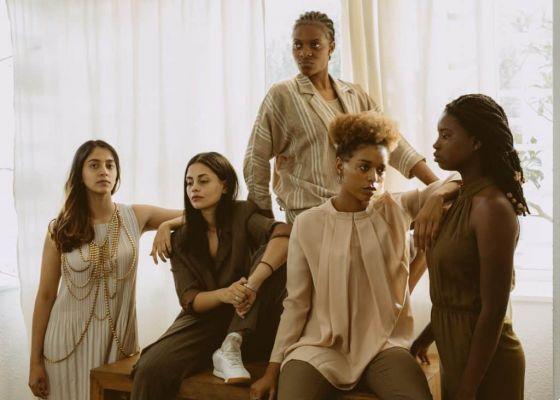The ways of loving are constantly changing. People are always looking for new ways of relating that match their style and life purpose.
Although monogamy is considered the standard of relationships in most societies, it has already been challenged by many couples, as well as experts such as psychologists and sociologists.
Of course, for most couples, just the thought of seeing their partner getting involved with someone else is a reason for jealousy and insecurities. But even though we cannot predict what relationships will look like in the future, the consensus is that we are going through a period of transition.
Currently, non-monogamy has been the subject of the most diverse discussions, especially on social networks. More and more, traditional marriage is no longer the dream and life goal of the new generations.
Although they are increasingly common, non-monogamous relationship models still raise some doubts and many people do not understand exactly how they work. Since knowing is the best way to form an opinion about something, let's go to the definition of the different types of relationships.
What is monogamy?
Monogamy is a form of sexual and/or romantic relationship in which a person has only one partner. It can remain for a lifetime or for a specific period, established from marriage or any stable relationship.
Monogamy is seen as the standard model of relationships, being the most accepted way of relating in our society. Monogamous relationships are therefore related to fidelity and exclusivity.
In the wild, monogamy is related to an animal remaining with a single partner throughout its life, usually for reproductive purposes and division of offspring care. This behavior is commonly seen, for example, in some species of birds, wolves and gibbons.
However, monogamy was not always the natural pattern of human beings. Scholars in the fields of biology, sociology and history argue that monogamy is only present in 3% of mammals.

Monogamy began to emerge about 5 years ago, when humans stopped being nomads and started living in small agricultural communities, consolidating themselves from socioeconomic changes throughout history.
According to the philosopher Friedrich Engels, in the book “The Origin of the Family, Private Society and the State”, from the agricultural revolution onwards, men began to accumulate more land and wealth. Therefore, they needed to be sure about the paternity of their children, so that the inheritance would be left to their offspring in the future.
The larger the communities became, the more monogamy became a form of contract in which each man would have more guarantee that “his” wife would only have sexual relations with him.
Therefore, for Engels, monogamy is not something natural, but a social construction that works as a way of controlling the female gender, in addition to being directly related to private property.
What is non-monogamy?
Non-monogamy is the opposite of monogamy, but its definition cannot be seen in this simplistic way, especially when we talk about human relationships and their complexities.
To understand non-monogamy, we must understand that a non-monogamous relationship is based on each individual's freedom of choice. It has a questioning character about the way monogamous relationships are established in society.
Unlike monogamy, a non-monogamous relationship does not have affective and/or sexual exclusivity between partners. Each person can be romantically and sexually involved with more than one person at the same time, but not necessarily with his/her partner.
For a long time, “open relationship” was seen as an alternative lifestyle, as in polyamory, in which three or more people engage and relate to each other with the knowledge and consent of all involved.

Although polyamory is a type of relationship that breaks the monogamous pattern, each non-monogamous relationship is unique and its rules are defined according to the parties involved.
It can be a relationship in which there is affective exclusivity between two people and, at the same time, freedom for each side to have a sexual relationship with the other partner. Here, the idea is that it is possible to meet and get involved with third parties without this affecting the main love relationship.
There is also the possibility of a non-monogamous relationship in which there is no sexual and affective exclusivity between the couple. That is, each one can relate to whoever they want and in the way they want, with or without the permission of the other.
What matters is dialogue
Contrary to what common sense believes, non-monogamy is not restricted to feminist or LGBT groups. Nor is it the “salvation” for marital quarrels or the definitive solution to end the couple's jealousy.
Dialogue is essential in any kind of love relationship, and it would be no different with non-monogamous ones. The main purpose of this type of relationship is not only to break patterns, but to respect the feelings and individual choices of each one.

It is worth questioning, for example, the high rate of infidelity in monogamous relationships, in which the partners do not talk to each other and continue with the relationship only as a result of social imposition.
Non-monogamy understands that loyalty and faithfulness in a relationship goes beyond involvement with another person. It's about knowing yourself and following your own desires, but respecting others and always making the rules clear.
All parties involved in this type of relationship need to know and agree to the agreements, which can be questioned and modified at any time. The keyword is consent.
Society has always covered up and minimized cheating when it was the man who cheated on his wife. If the woman betrays her partner, the judgments are much more violent. Therefore, non-monogamy cannot be separated from greater sexual freedom for women.
We humans interact in different ways. We feel love in different intensities throughout life. When we find the right person, there is no right or wrong way to relate, as long as there are no secrets and lies and the conversation is always open and frank.
It is up to each one to decide how to guide their relationship, and it is not because non-monogamy presupposes the non-existence of exclusivity that there can be no breach of trust. Nor does it mean that love is less.
You may also like
- Tips for cultivating healthy relationships
- Learn to put more awareness into your relationships
- Do you know what codependency is in a relationship?
Love is, above all, a choice. It's the choice to be next to those who do you good. Within any relationship, whether monogamous or not, the most important thing is that respect and trust are never lost.

























